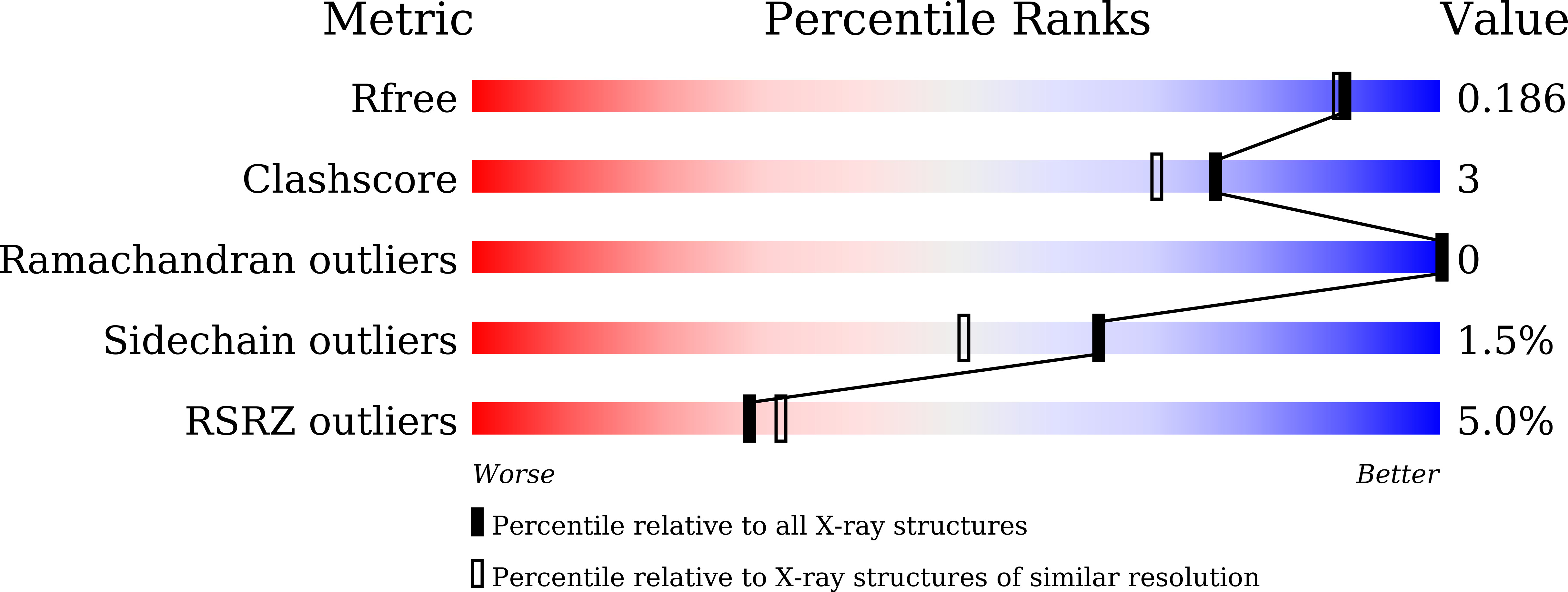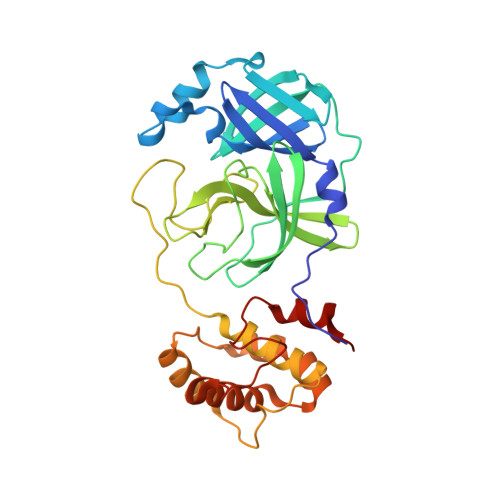De novo design of SARS-CoV-2 main protease inhibitors with characteristic binding modes.
Zhu, Y., Meng, J., Feng, B., Zhao, Y., Zang, Y., Lu, L., Su, M., Yang, Q., Zhang, Q., Feng, L., Zhao, J., Shao, M., Ma, Y., Yang, X., Yang, H., Li, J., Jiang, X., Rao, Z.(2024) Structure 32: 1327-1334.e3
- PubMed: 38925121
- DOI: https://doi.org/10.1016/j.str.2024.05.019
- Primary Citation of Related Structures:
8JCJ, 8JCK, 8JCL, 8JCM, 8JCN, 8JCO - PubMed Abstract:
The coronavirus disease 2019 (COVID-19) is caused by a novel coronavirus called severe acute respiratory syndrome coronavirus 2 (SARS-CoV-2), which spreads rapidly all over the world. The main protease (M pro ) is significant to the replication and transcription of viruses, making it an attractive drug target against coronaviruses. Here, we introduce a series of novel inhibitors which are designed de novo through structure-based drug design approach that have great potential to inhibit SARS-CoV-2 M pro in?vitro. High-resolution structures show that these inhibitors form covalent bonds with the catalytic cysteine through the novel dibromomethyl ketone (DBMK) as a reactive warhead. At the same time, the designed phenyl group beside the DBMK warhead inserts into the cleft between H41 and C145 through ¦Đ-¦Đ stacking interaction, splitting the catalytic dyad and disrupting proton transfer. This unique binding model provides novel clues for the cysteine protease inhibitor development of SARS-CoV-2 as well as other pathogens.
Organizational Affiliation:
Shanghai Institute for Advanced Immunochemical Studies and School of Life Science and Technology, ShanghaiTech University, Shanghai 201210, China; National Clinical Research Center for Infectious Disease, Shenzhen Third People's Hospital, Shenzhen 518112, China.




















